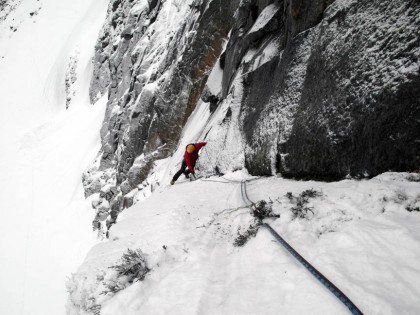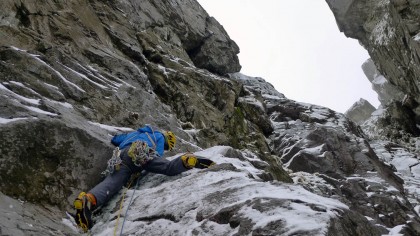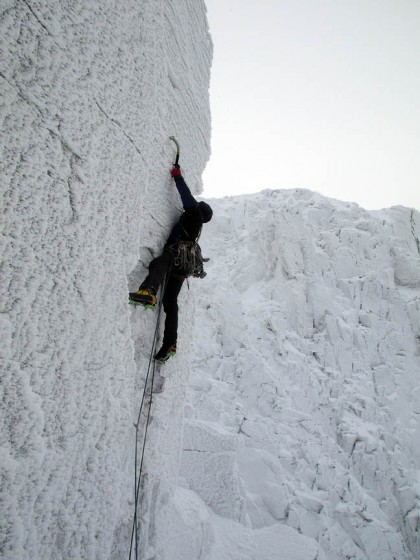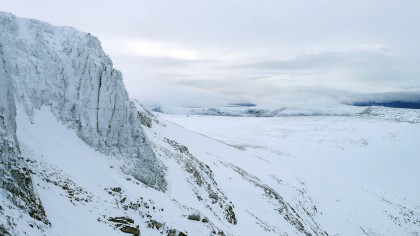The Scottish Boogie
These guys, it turns out, know how to boogie.
The Gathering, VIII 9, Second Ascent from Jenny Crook on Vimeo. These young bulls, Greg Boswell and Will Sim, were both great dudes and hosts for the Scottish Winter Meet hosted by the BMC in Glenmore Lodge in the Cairngorms.
Yep, they know how to get it done over there. Here’s how it works: I’ve long been of the belief that for a winter route to have any worth, other than for training, it has to have ice. Seems reasonable, a good reason to strap on the sharp stuff, right? Well these guys feel a similar way, but it involves snow. There absolutely has to be snow on the rock for a route to be in, and that’s the final word. Drytooling to a Scottish winter climbing is climbing a black, dry cliff. When there is rime or snow on the wall, ice in the cracks, that’s winter climbing; it is also hard to protect, cams don’t work and you go through gloves like my cat goes through rodents.
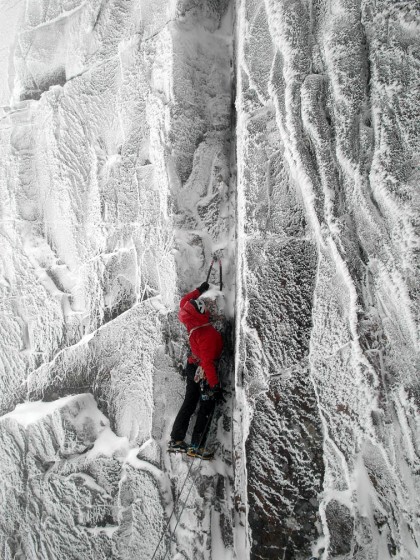
Canadian Jen Olsen getting started on Daddy Long Legs, Corrie an Lochan, Cairngorms. Nick Bullock photo.
You see a lot of arm waving as people try to warm frigid hands in the relatively warm Scottish temperatures. Again, its all that snow – your gloves are constantly wet. On a good day in New England I don’t even have to unpack my bag at the end of the day, that is definitely not the case there; the drying room at the Glenmore Lodge was more crowded than the bar.
Scottish grades are a bit confusing to the uninitiated. They incorporate two numbers, say VII 8. For a North American the hang up is with the fact that our system always refers to the hardest moves. In the Scottish system that would be the second number, the one that is often dropped in conversation. The first number, the roman numeral, sums it up succinctly. For a long scary mixed route graded IV M7+ R, a Scottish climber might refer to it with as a quick IX 8. The higher roman numeral screaming that the whole thing feels more like ninth level climbing, even though the hardest moves are a little easier; the approach, length and poor protection can conspire to make it all seem almost too much to bear. The thing I like about the system is it acknowledges the inherent difficulties of traditional climbing.
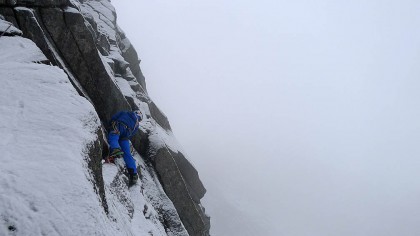
Nick Bullock about to get into some not-so-safe terrain, a very long way from the road. Trail of Tears, Lochnagar, Cairngorms.
Luckily, I was well set up with hard-hittin rope gun, Nick Bullock, who was happy to take the sharp end when things looked a bit too serious for a vacationing Yank. We had a load of fun and shared a laid back, let’s-take-a-look approach that paid off with the fickle Scottish conditions.
The last day of the meet we met up with local hardman Guy Robertson to take a look at a new line in Glen Coe on the Buachaille’s Slime Wall.
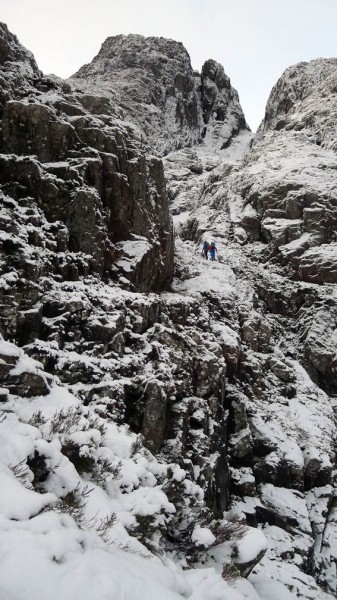
Guy and Nick finding their way. The Slime Wall is the steepest section of cliff on the most prominent formation.
I never even heard where the proposed line went because when we got there all attention was on an established one called Guerdon Grooves, that hadn’t seen a second ascent in 28 years. It turned out to be a great route, with the very psyched locals leading the meat of the climb.
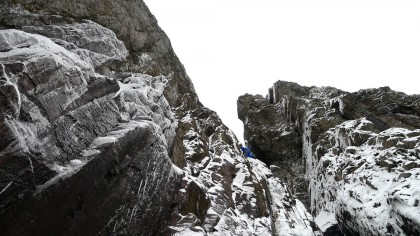
Nick up on the second pitch, the best pitch of the route, which follows shallow corners with iced up cracks.
All together it was a real learning experience and a great time. I was really inspired by the no-questions-asked traditional ethic. I’m looking forward to taking a fresh look at the local crags right here at home.

